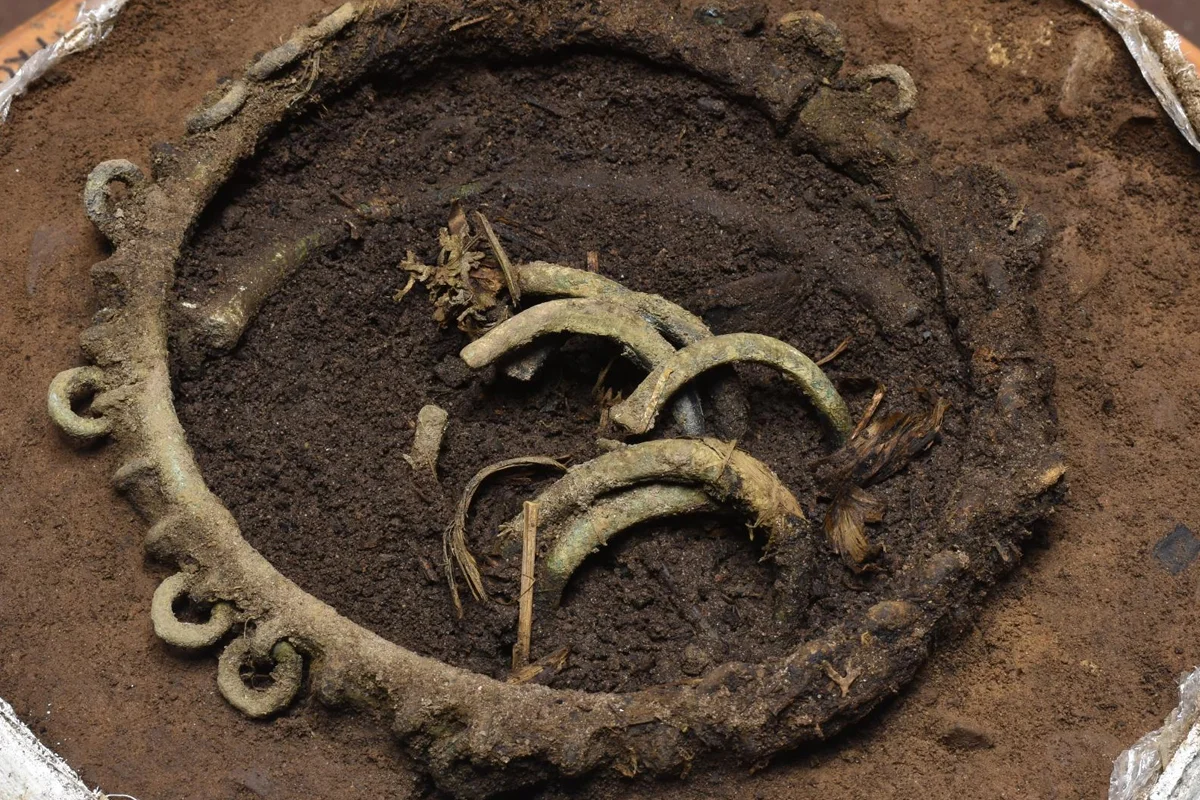Archaeologists from GUARD Archaeology have unearthed a Bronze Age hoard consisting of nine bronze bracelets and necklaces.
The discovery was made in preparation for the construction of a new housing estate in the village of Rosemarkie, Scotland.
Archaeologists found the hoard within the middle of a prehistoric settlement, a Bronze Age village with six roundhouses and a Bronze Age cist grave protect by a timber palisade fence.
A closer examination has determined that the hoard dates from around 1000 BC and was likely buried in a woven basket that has since decomposed over time.
A micro-excavation of a retrieved soil clump in laboratory conditions has revealed that the hoard includes six penannular bracelets, one cup-ended penannular bracelet, a complete neck ring, one partial neck ring, and intertwined fibrous plant cords tied and knotted around some of the bronze objects.

Rachel Buckley from GUARD Archaeology said: “While there are other examples of hoards where it has been postulated that items were bound together due to their positioning, the vegetation in the Rosemarkie hoard has survived for approximately 3000 years, proving that these artefacts were held together.”
According to the researcher, the unusual preservation of the plant material is likely due to the anti-microbial properties of copper (in the bronze), where the corrosion products from the copper adhere to the organics and preserve them.
The hoard was deposited in a single homogenous fill within a shallow pit, which the archaeologists suggest was intended as a temporary storage for security. Further studies of the associated Bronze Age settlement may reveal whether it was deposited during a time of crisis, or simply forgotten and abandoned along with the settlement.
Header Image Credit : Guard Archaeology
Sources : GUARD Archaeology







